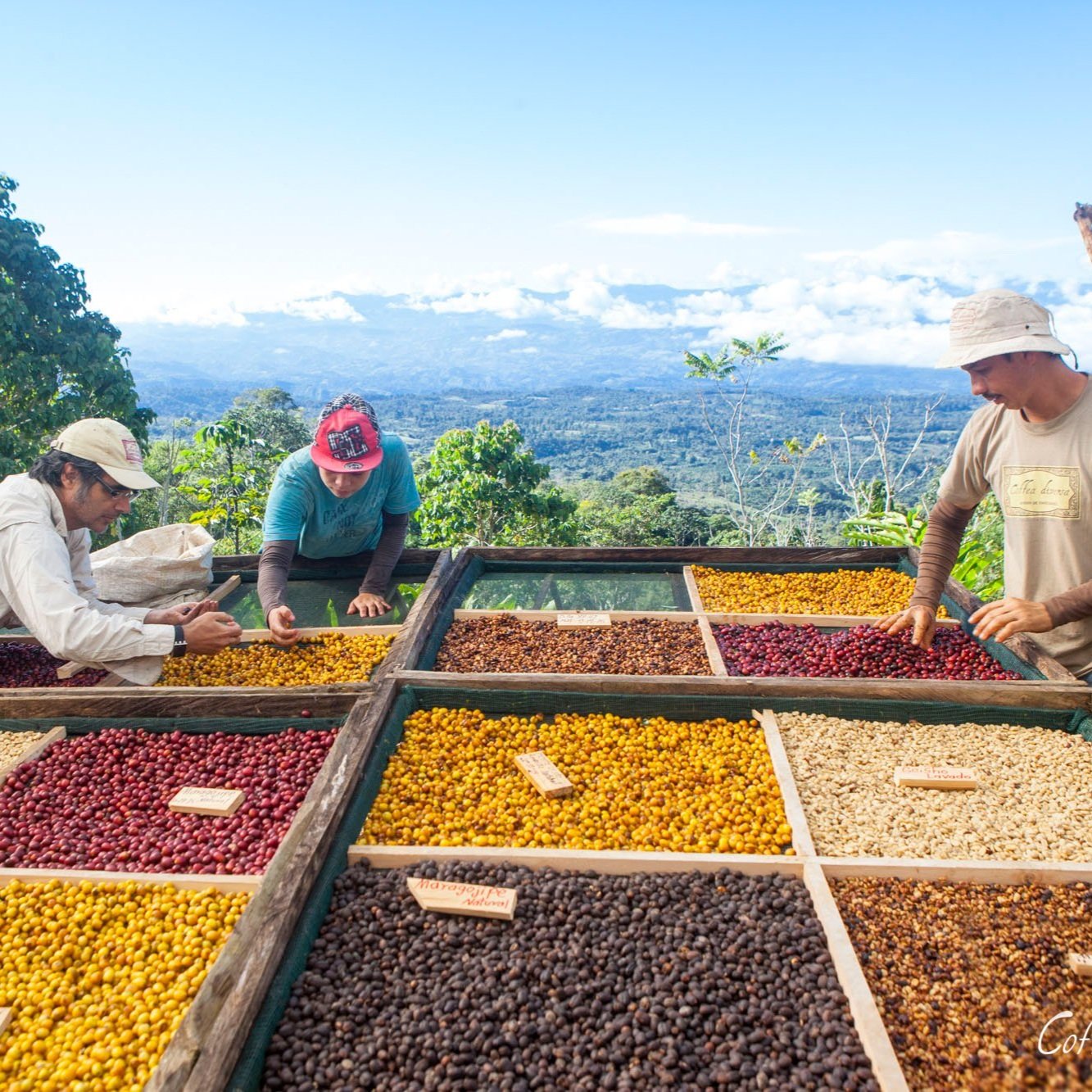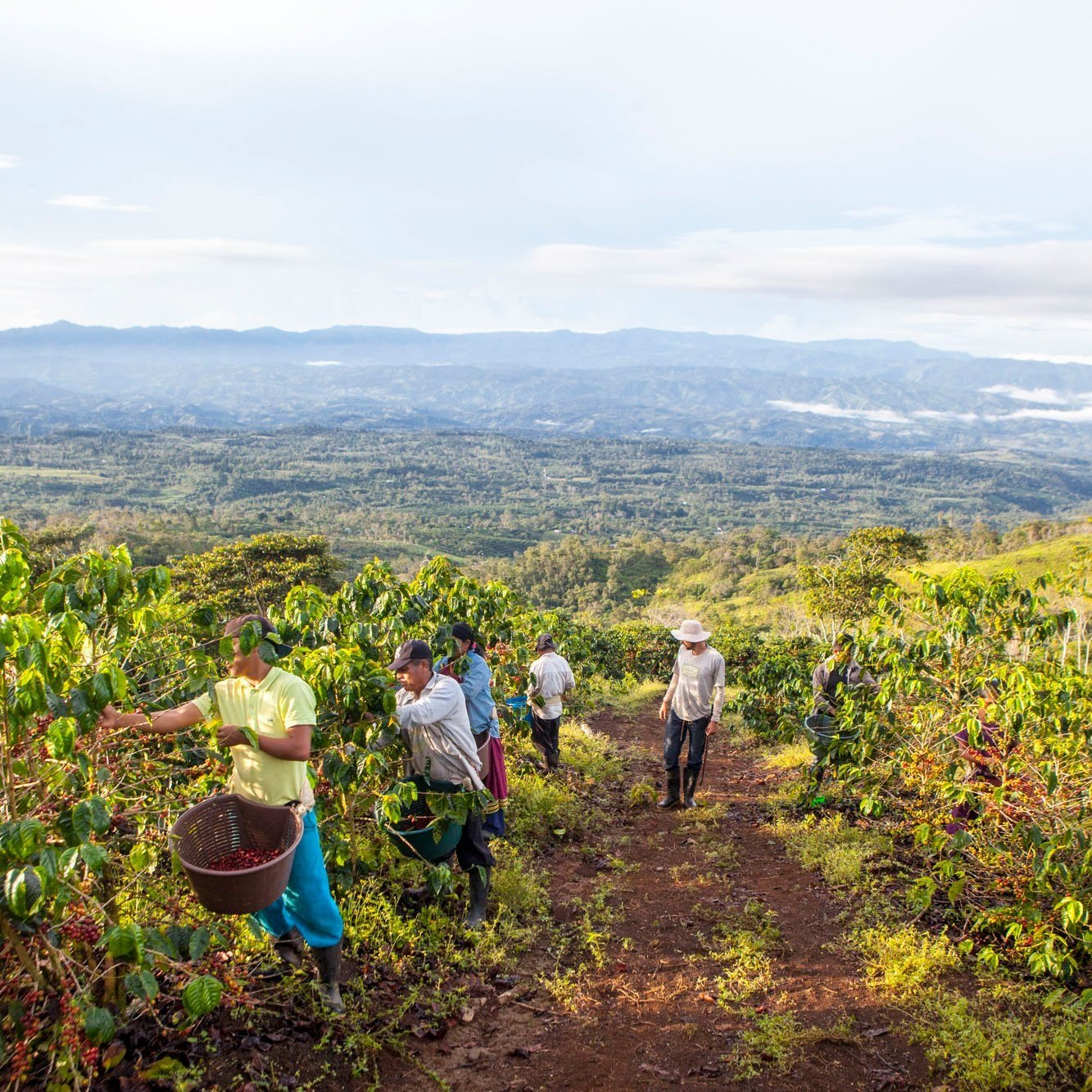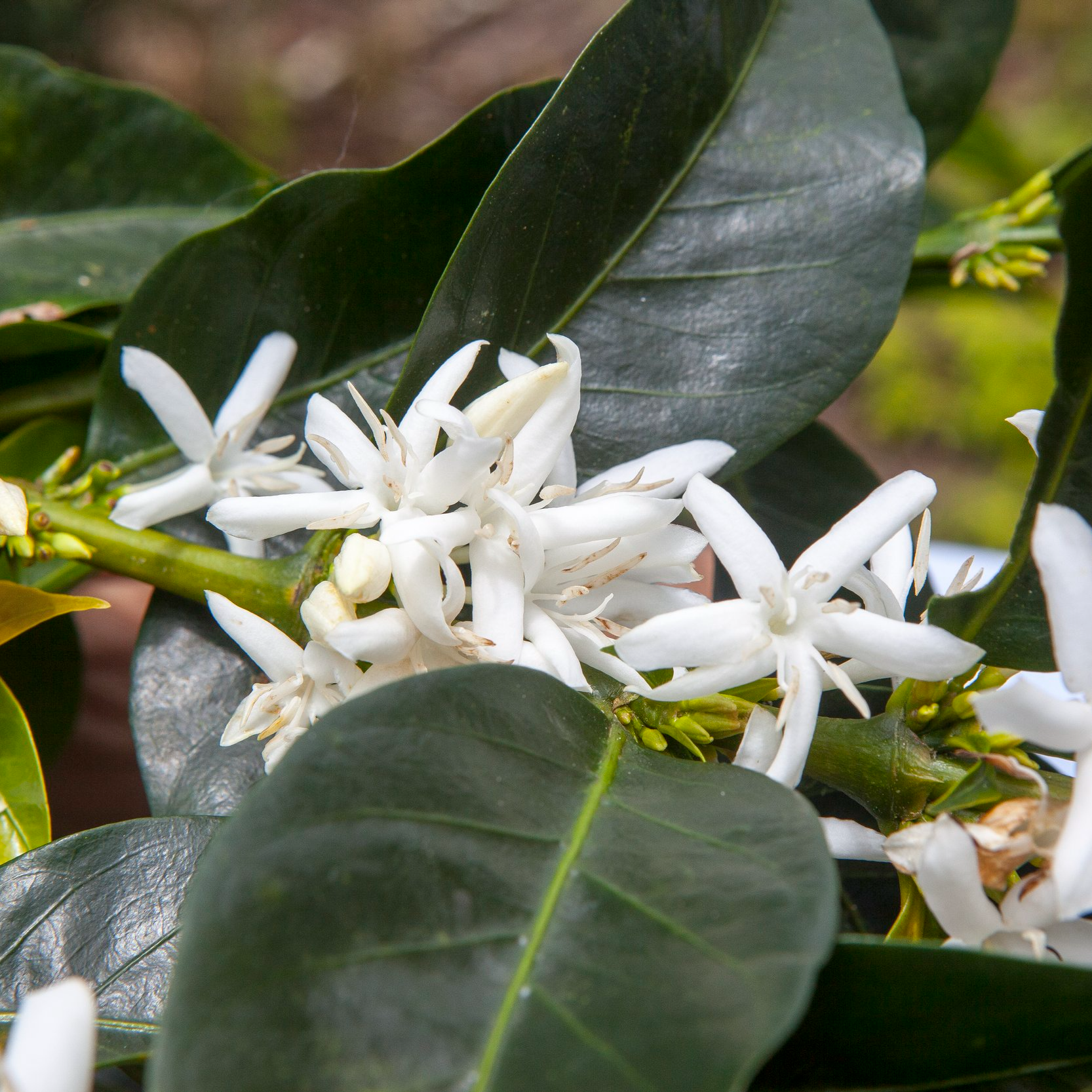 Image 1 of 3
Image 1 of 3

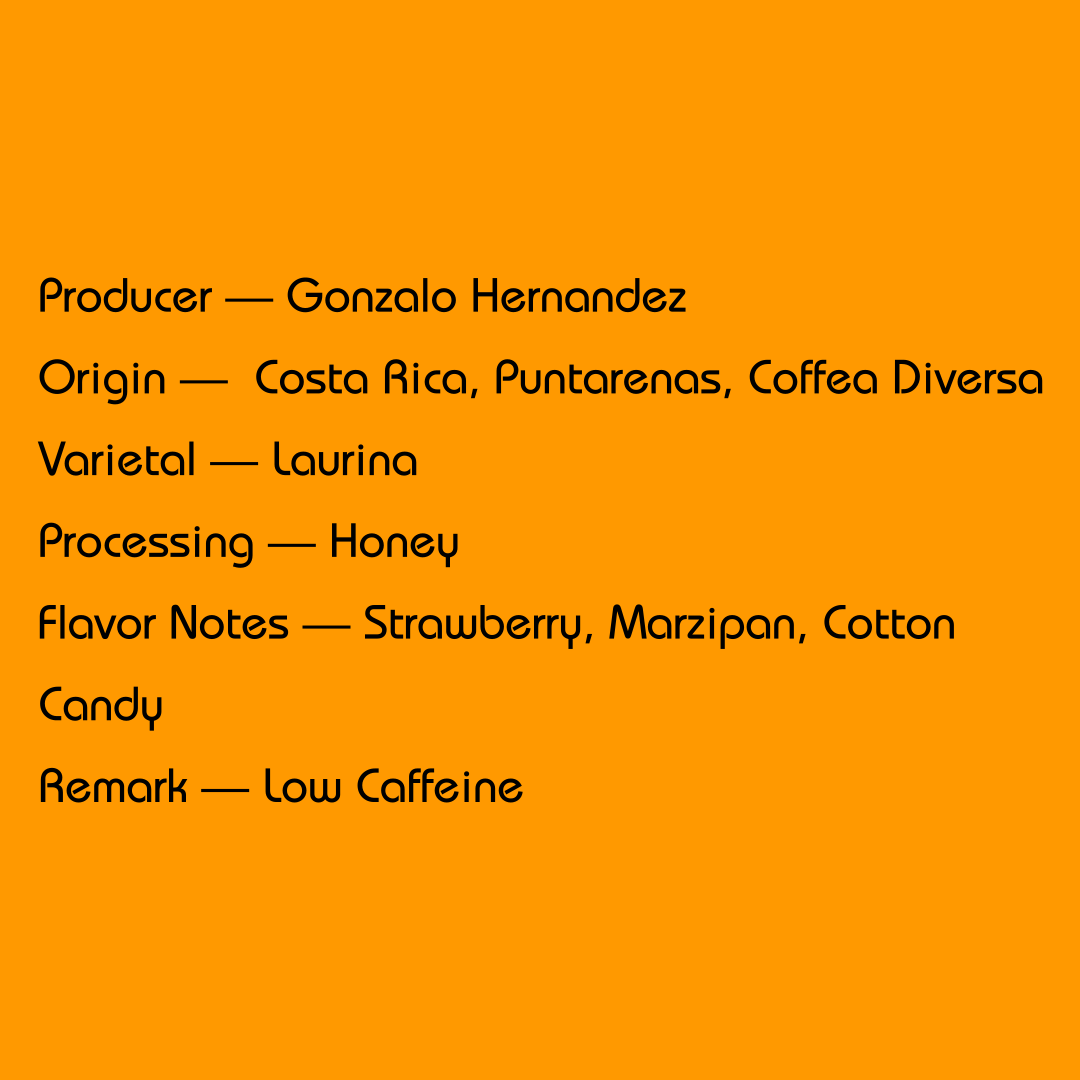 Image 2 of 3
Image 2 of 3

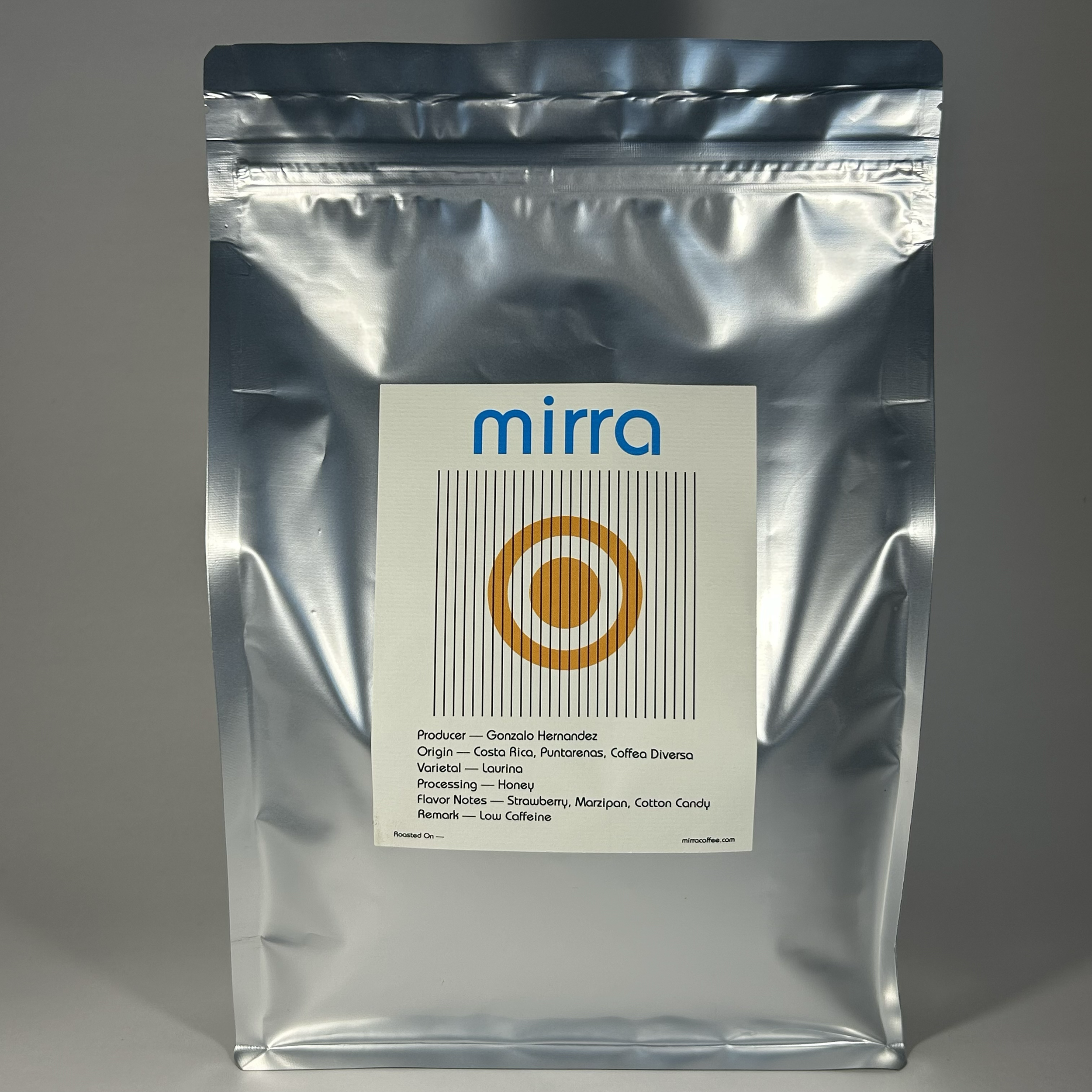 Image 3 of 3
Image 3 of 3




Costa Rica Gonzalo Hernandez - Laurina (Low Caffeine)
We’ve been on the hunt for a good bit now for another low-caffeine offering to replace the laurina, aramosa blend from Daterra that we last offered in 2023, and we’ve finally found one in this super tasty honey laurina from Gonzalo Hernandez of Coffea Diversa. Despite this being the third lot we’re offering from Gonzalo this season, we find this coffee to be incredibly distinct from the other two, and certainly worth stocking up on—especially if you’re looking for that late-day coffee fix without as much caffeine as a more typical varietal without the decrease in flavor quality that decaffeination processes entail. This offering manifests in an abundance of red, pink flavors, reminding us most closely of in-season strawberries and an almost powdery cotton candy sweetness. This is supported by a more thick, robust note of almondy marzipan, which unifies the cup in harmonic balance.
Coffea Diversa is a super unique project, initially begun by Gonzalo Hernandez in the Central Valley region of Costa Rica in 2004. With over 800 specimens of different varietals, many of which are commercially cultivated on their farm, Coffea Diversa not only possesses the largest private collection of living coffee varietals and cultivars, but grows the most diverse range of varietals of any other farm that we’re aware of. For this reason, Coffea Diversa is the only farm in the world to commercially grow many varietals that can be found among their offerings. Given the diversity and scope of varietals they cultivate, they often refer to themselves not as a coffee farm, but rather as a coffee garden. How Gonzalo manages to keep on top of such a wide array of different varietal lots while attaining the uncommonly high quality that he does is frankly a big mystery to us, but we applaud and thank him for his care and intentionality which manifest directly in just how good we find his coffees to be. The lots we purchased from Gonzalo were all grown in the Puntarenas region between 1.500 and 1.700 masl. All coffee on the farm is grown in shade provided by cedar, avocado, and banana trees.
Laurina was first discovered growing on Reunion Island, a small French possession east of Madagascar, which was known at the time as Bourbon. In 1810, coffee farmers on Reunion noticed distinct, smaller coffee plants growing alongside their bourbon plants—bourbon being by far the dominant varietal on the island, and the focus of commercial cultivation there. These plants came to be known as laurina or bourbon pointu, meaning ‘pointed bourbon,’ due to their production of more pointy, oval-shaped cherries and seeds when compared to standard bourbon. Laurina, we now know, is a natural mutation of bourbon which occurred on the island some time between the introduction of coffee to the island in 1715 and its official discovery in 1810. Laurina contains roughly a third of the caffeine of most other arabica varietals, with a 350mL/12oz cup containing roughly 45mg of caffeine. With this lower caffeine content, however, comes a decreased resistance to pests,—caffeine being a natural pesticide that the coffee plant produces—which increases the delicacy of the plant and decreases its potential yield accordingly. In addition to being susceptible to pests, laurina is also very susceptible to leaf rust, making its cultivation even more difficult. Despite this, it has very high potential for quality when carefully cultivated, at altitude.
All coffee is sold whole-bean to reduce oxidization, and increase the longevity of volatile aromatic compounds.
We’ve been on the hunt for a good bit now for another low-caffeine offering to replace the laurina, aramosa blend from Daterra that we last offered in 2023, and we’ve finally found one in this super tasty honey laurina from Gonzalo Hernandez of Coffea Diversa. Despite this being the third lot we’re offering from Gonzalo this season, we find this coffee to be incredibly distinct from the other two, and certainly worth stocking up on—especially if you’re looking for that late-day coffee fix without as much caffeine as a more typical varietal without the decrease in flavor quality that decaffeination processes entail. This offering manifests in an abundance of red, pink flavors, reminding us most closely of in-season strawberries and an almost powdery cotton candy sweetness. This is supported by a more thick, robust note of almondy marzipan, which unifies the cup in harmonic balance.
Coffea Diversa is a super unique project, initially begun by Gonzalo Hernandez in the Central Valley region of Costa Rica in 2004. With over 800 specimens of different varietals, many of which are commercially cultivated on their farm, Coffea Diversa not only possesses the largest private collection of living coffee varietals and cultivars, but grows the most diverse range of varietals of any other farm that we’re aware of. For this reason, Coffea Diversa is the only farm in the world to commercially grow many varietals that can be found among their offerings. Given the diversity and scope of varietals they cultivate, they often refer to themselves not as a coffee farm, but rather as a coffee garden. How Gonzalo manages to keep on top of such a wide array of different varietal lots while attaining the uncommonly high quality that he does is frankly a big mystery to us, but we applaud and thank him for his care and intentionality which manifest directly in just how good we find his coffees to be. The lots we purchased from Gonzalo were all grown in the Puntarenas region between 1.500 and 1.700 masl. All coffee on the farm is grown in shade provided by cedar, avocado, and banana trees.
Laurina was first discovered growing on Reunion Island, a small French possession east of Madagascar, which was known at the time as Bourbon. In 1810, coffee farmers on Reunion noticed distinct, smaller coffee plants growing alongside their bourbon plants—bourbon being by far the dominant varietal on the island, and the focus of commercial cultivation there. These plants came to be known as laurina or bourbon pointu, meaning ‘pointed bourbon,’ due to their production of more pointy, oval-shaped cherries and seeds when compared to standard bourbon. Laurina, we now know, is a natural mutation of bourbon which occurred on the island some time between the introduction of coffee to the island in 1715 and its official discovery in 1810. Laurina contains roughly a third of the caffeine of most other arabica varietals, with a 350mL/12oz cup containing roughly 45mg of caffeine. With this lower caffeine content, however, comes a decreased resistance to pests,—caffeine being a natural pesticide that the coffee plant produces—which increases the delicacy of the plant and decreases its potential yield accordingly. In addition to being susceptible to pests, laurina is also very susceptible to leaf rust, making its cultivation even more difficult. Despite this, it has very high potential for quality when carefully cultivated, at altitude.
All coffee is sold whole-bean to reduce oxidization, and increase the longevity of volatile aromatic compounds.
